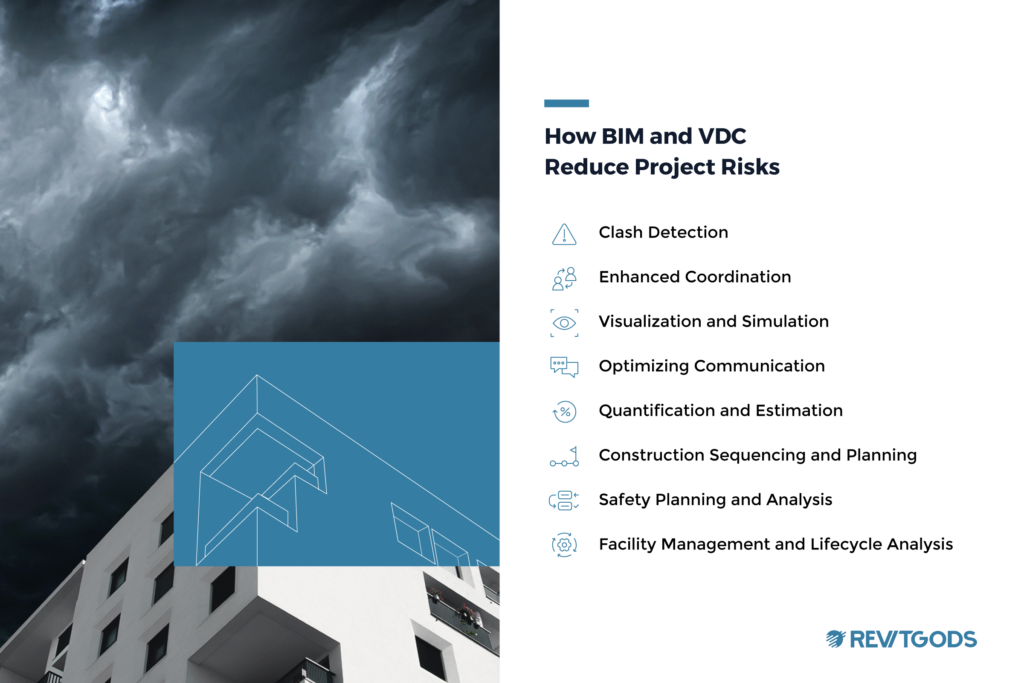Building Information Modeling (BIM) has become increasingly popular in the building design industry, with its ability to generate 3D models for project planning and management. As a result, businesses must decide whether to manage their BIM operations internally or through an external provider.
This article will discuss in-house versus outsourced BIM management and provide insights into which approach may be best for your building projects. Understanding the implications of each approach will help you make the best choice.

What is BIM management?
BIM technology can make a dramatic difference in design project success and delivery. It has become the go-to tool for the architecture, engineering, and construction (AEC) industry, and goes beyond simply creating 3D models. With BIM models, project teams can utilize features like automated clash detection, workflow automation, cloud-based collaboration, reality capture, and integrated project delivery. It is a crucial process that involves organizing and managing the design project lifecycle, workflow, and building visualizations.
In order for firms to be competitive in the emerging BIM industry, BIM managers must develop BIM implementation plans, ensuring all team members are working towards the same goals. Their job is to empower productivity among project teams and make sure they can collaborate effectively by removing any technical barriers. This includes training and coaching them in various BIM software platforms and providing them with the necessary tools and resources for a project to succeed.
They also create monthly reports for senior managers to analyze how projects are performing, develop Autodesk Revit templates and BIM workflows to streamline production, troubleshoot issues that arise during the project, and automate certain components of the design process to speed up analysis, decision-making, and documentation. BIM managers take the lead on the technical side of the project so that design managers can spend more time on the building design. Finally, BIM managers make sure that BIM models capture all elements of an intended design.
This can all be a tall order when you’re looking to hire in-house BIM managers.
In-house BIM management
Firms can take a few routes toward hiring an in-house BIM manager. They’ll either promote an existing design team member to this position, hire a headhunter to recruit for this competitive position, or form committees to tackle BIM management responsibilities as a team.
In-house BIM management requires spearheading BIM implementation for the company, coming up with BIM execution plans, delivering training, managing BIM projects, developing BIM content, coordinating the work of design consultants working in BIM, and inventing new workflows to speed up collaboration and production. As such, in-house BIM management requires a team of highly skilled professionals well-versed in the latest BIM technologies.
Pros
In-house BIM management has several advantages to consider. Here are some of the most notable ones:
More control
In-house BIM management provides more security. Firms can keep a closed network where no one outside the company has access to their projects or standards, and directly control the development of their BIM standards and how they’re implemented in projects. This can be valuable when you have tight deadlines and don’t have time to wait for a consultant to make changes for you.
You’ll also be able to directly control employee training and onboarding. External consultants and BIM outsourcing companies will usually teach their best practices and standards — not yours. Plus, they’ll never be knowledgeable enough about a building designer’s often nuanced approach to designing buildings. BIM consultants have to learn their clients’ industry in order to properly consult on it. Utilizing in house resources reduces that learning curve and makes BIM implementation easier.
Seamless coordination
You can use in-house BIM managers to run clash detection on projects. When BIM managers work directly with the in-house design team to coordinate and resolve issues, they can reach a fully coordinated design much faster. During the design development stage of a project, architects typically need to make sure all of the building systems can fit above the ceiling without clashing with each other. Working with engineers to coordinate BIM process issues is time consuming, and it could be cheaper and more efficient to handle internally versus outsourcing BIM modeling services.
Increased security
If security concerns you, in-house BIM management might be the best way to go. That’s because outsourcing the management of a BIM project may require you to rely on an external party to handle your sensitive data and other confidential information.
When design teams host their projects locally on their server versus in the cloud, they can keep all of their data within a closed environment. In-house BIM management means your own trusted personnel manages your data, so you can keep it secure.
Cons
Despite the advantages of in-house BIM management, there are also some drawbacks. BIM management is a daily job that needs a lot of attention. When firms try to create this position (or positions) from within, people always get pulled into working on billable project work, abandoning their duties as a BIM manager. Recruiting for this role is also a challenge because, realistically, it usually takes a team to execute the job properly.
Here are some more specific reasons you may want to reconsider an in-house BIM solution:
Cost
Hiring an In-house BIM manager can be more costly. It means you need to cover their full-time salary, fund their professional development, and invest in your own BIM management tools. BIM managers need ongoing professional development just like everyone else in the organization. Sending them to conferences and paying for necessary BIM certifications can be a huge expense, especially for small businesses with limited resources.
Plus, BIM management is often a two-person job (at least). That’s because the person you hire might be great technically, but may not have the skills to fully implement BIM throughout your organization. You’ll have to lean on another team member who may be better suited. That cost estimation can add up quickly and be a major financial burden for smaller organizations.
Need for skilled professionals
Using BIM for all phases of a project, from schematic design to construction administration and final deliverables at varying levels of detail, requires various different skill sets from the team members working on the project. Even if you hire a single BIM manager to manage all of your projects, they might lack all the skills needed to do their job effectively.
For example, running clash detection during the design development or construction phase of a project is a skill that most BIM managers don’t have. You have to be knowledgeable in VDC software, such as Navisworks or Revizto. That person would also have to be somewhat familiar with various construction methodologies to effectively run a BIM coordination meeting after running clash detection.
Filling all of these different roles and skill sets can be tough, and talent is already scarce for in-house roles. Finding a BIM manager who is great technically, understands building design and construction, and has the leadership capability to lead BIM coordination and BIM implementation within an office is rare, making this an extremely difficult position to fill.
Also, most BIM managers typically only last 2-3 years at a company. They’re either overworked and under-supported (leading to burnout), or they don’t have enough work to fill their time and end up doing billable project work, abandoning their core responsibilities altogether.
When hiring an in-house BIM manager, you also need to have a senior person skilled enough to check and manage that person’s work. Otherwise, they’ll likely flounder in the role or spend too much time working on tasks that are nonessential.
Finding the right candidate for a BIM-related position can often take time and resources that your organization might not have. If that’s the case, outsourcing may be a more viable option for you.
Training and infrastructure requirements
This is one of the major criticisms regarding in-house BIM management. In-house BIM managers might need an array of extra tools and skills to do their job effectively. This includes access to paid plugins that can be as expensive as investing in the original BIM software itself. Or, maybe your in-house team has a good grasp of 3D BIM, but they need additional training and software to use 4D BIM or 5D BIM. BIM managers might also need a super-powered computer to work on that can handle very complex BIM models.
Lastly, just like everyone else, BIM managers need ongoing professional development. The BIM industry changes rapidly, and they’ll need to stay up on current trends and practices.
This is why a company might opt for professional BIM outsourcing services instead. The partner you choose will already have the required tools and knowledge, so you won’t need to worry about all those setup and training costs.
Outsourced BIM management
Now that you have a comprehensive overview of managing BIM in-house and its pros and cons, let’s look at outsourcing.
Essentially, outsourcing your BIM management to another company means you’re contracting experienced professionals familiar with industry standards and processes to do the job for you.
In this section, we’ll look at some pros and cons of outsourcing BIM management to help you make the right decision for your organization.

Pros
Here are the main pros of relying on an experienced outsourcing partner:
Access on-demand talent
Outsourced BIM talent is often available when your in-house team is not. For example, an outsourced BIM management team can be available on days when an in-house BIM manager might be on leave or pulled away to work on billable projects during busy periods. If your outsourced team is working remotely in a different time zone, you can benefit from having work done after hours. Additionally, they can help you meet specialized needs within your organization as they arise, providing more flexibility without the need to hire additional help.
Keep up with trends and tools
As part of their jobs, BIM consultants regularly attend conferences, webinars, and read white papers on the latest trends in the industry. You benefit from having a team that is always up to date on the latest workflows and innovations. Often, these consultants can bring insights from other clients into your firm that can significantly increase your company’s growth or productivity. They have spent time solving the same issues repeatedly and are well-equipped to spot inefficiencies in your processes.
BIM consultants also come with a set of productivity tools that they can bring into your firm and customize for your specific needs. Based on your goals and the inefficiencies they uncover, they will know exactly which BIM tools and software to implement within your organization.
Save money
Outsourcing BIM management can cut your costs as well, both on training and infrastructure costs and by helping you use your resources efficiently. In fact, you can outsource a BIM service provider team for about the same cost as hiring a single person to do the job in-house.
A good BIM management outsourcing partner can also scale up or down depending on the size and complexity of your project, getting you the best value for your money. You might also get free access to some tools and resources as added perks.
Increase scalability
As your firm expands, outsourced BIM management teams can expand along with you, providing new tools, staff, and resources as your needs continue to develop. It’s already challenging to find one competent BIM manager. Finding multiple managers to effectively support your growing organization could take years and cost thousands of dollars in recruiting expenses.
BIM managers can be divided into two categories: those with strong technical skills and those who excel at implementing new systems. As your business grows, you will require both skill sets, and finding an individual who possesses both can be difficult. However, both capabilities are necessary to help you address the expanding requirements of your enterprise. Working with an outsourced partner allows you to scale up or down at will.
Cons
As with the in-house option, outsourcing has some downsides. Here are the main cons of outsourcing BIM management:
Cultural Misalignment
Not all BIM consulting firms are the same. They each have different approaches to managing BIM projects. These approaches are often shaped by the consultant’s previous experiences. Working with a firm that doesn’t listen to and address your needs can be risky. It’s important to ensure that your outsourced partner truly understands your goals and has a plan that aligns with your needs.
Security concerns
When outsourcing BIM management, keep in mind that you may need to store data externally, and with that comes the inherent risk of your outsourced partners sharing your information with others. Your service provider may lack security measures, leading to confidentiality risks. Without proper encryption, your data is at risk for security breaches and misuse. Because of this, you’ll need to ensure your outsourced consultants have the necessary protocols in place, and take additional steps to secure your data when outsourcing.
Lack of control
Outsourcing involves having another party develop and implement your standards, and not all BIM experts have the same level of expertise. To ensure that you are always involved in the process, it is helpful to have bi-monthly check-ins to ensure that everything is on track.
In general, when you outsource your BIM management, you are essentially relying on your service provider. If they are unreliable, it can lead to major issues. It’s important to ensure that they are up-to-date on the latest standards and technologies to avoid costly mistakes in your project. It’s crucial to hire a reliable provider to prevent these problems in the future.
Which to choose?
Now you’re faced with a choice: hire in-house or outsource your BIM management? To help decide, start by considering your goals. Are you looking to expand your office and get more work? Do you want to increase your in-house production capabilities? If so, outsourcing BIM management might offer a solution.
If you’re a large organization with enough resources, you might consider a hybrid approach and have an in-house person to handle the security issues posed by outsourcing, having them directly manage your outsourced partner.
Weighing these factors can help you make the best decision for your BIM project. If you have any questions about BIM, our experts at RevitGods can answer a wide spectrum of questions about BIM implementation, Revit standards, and any related concerns.





